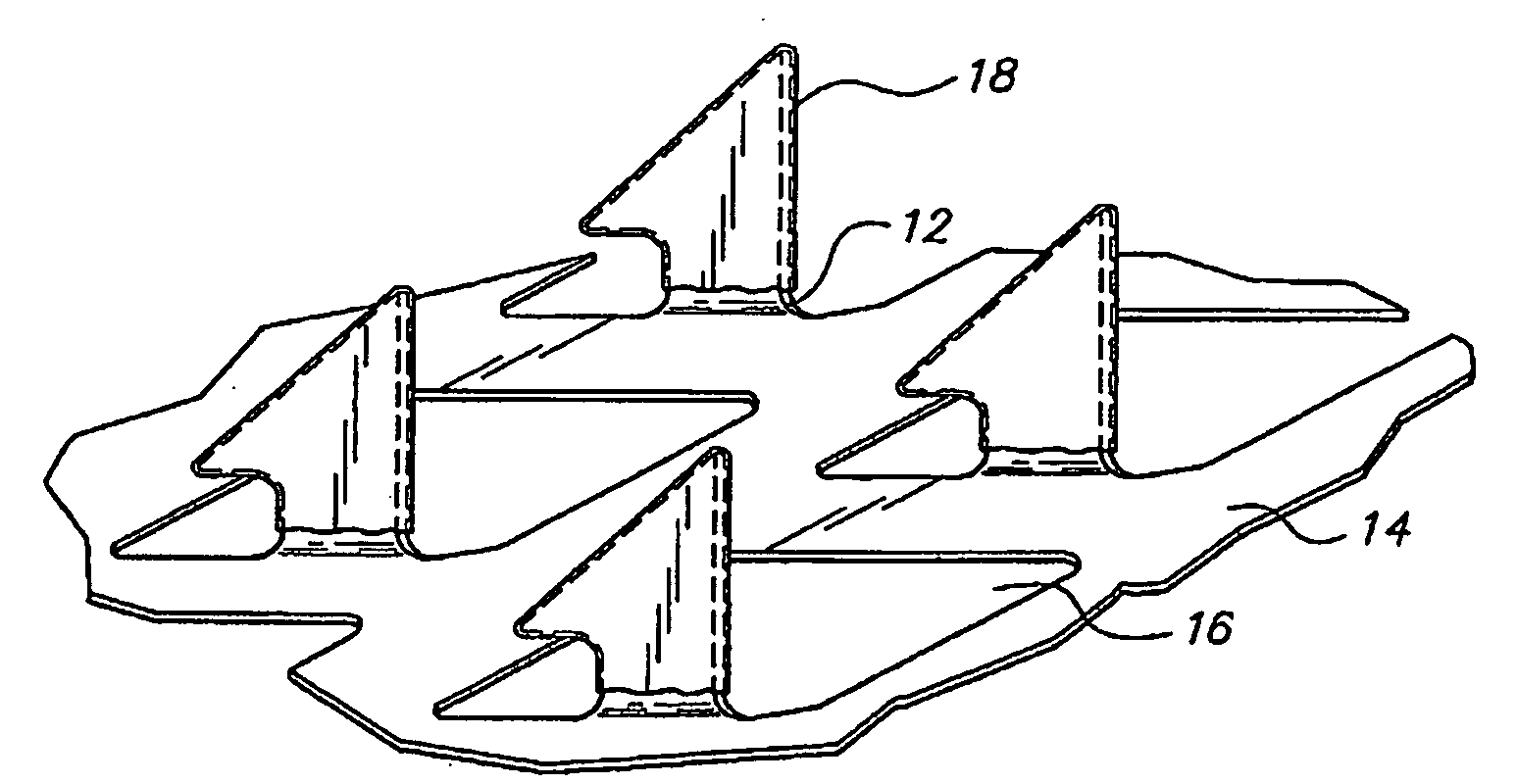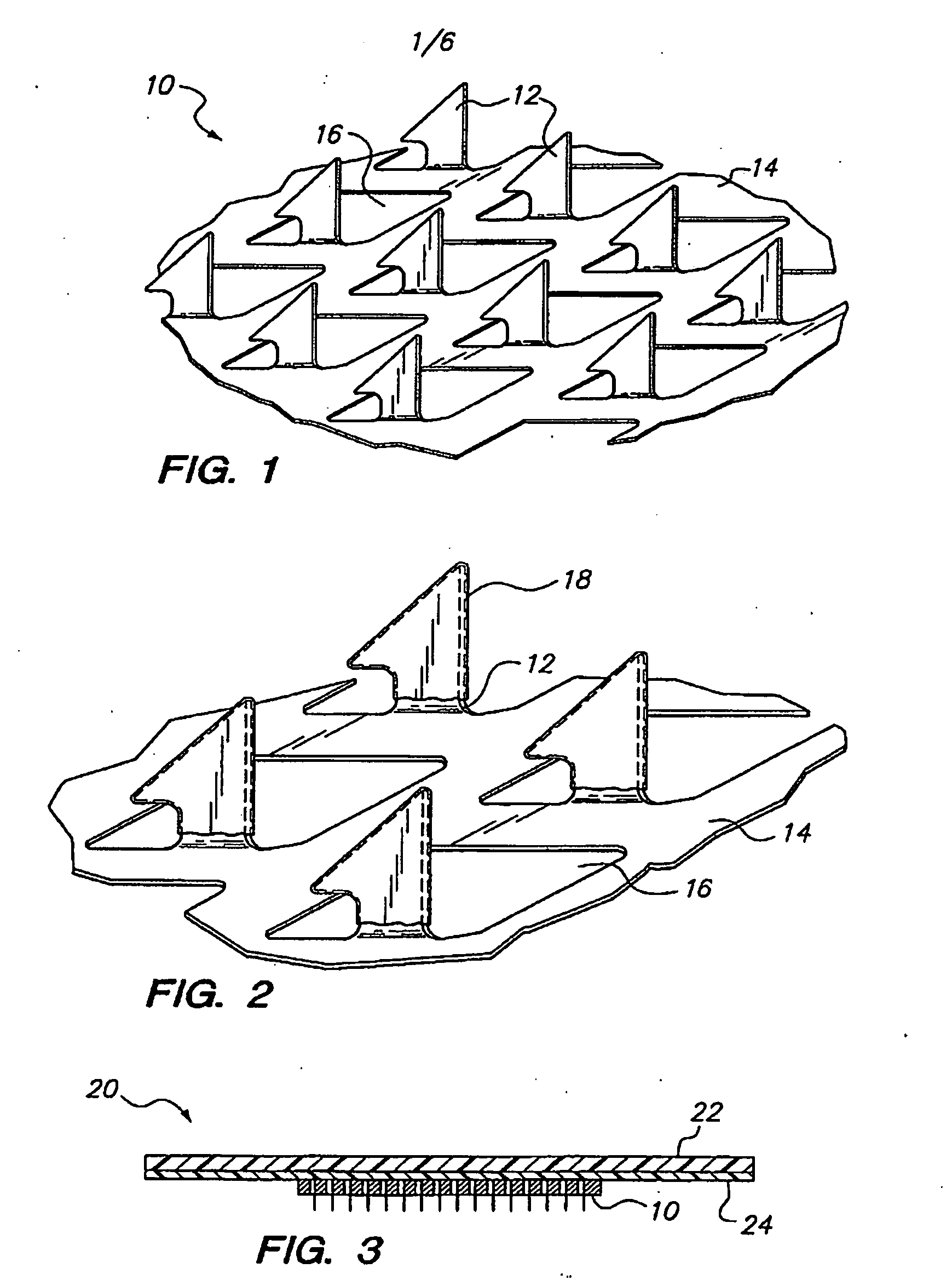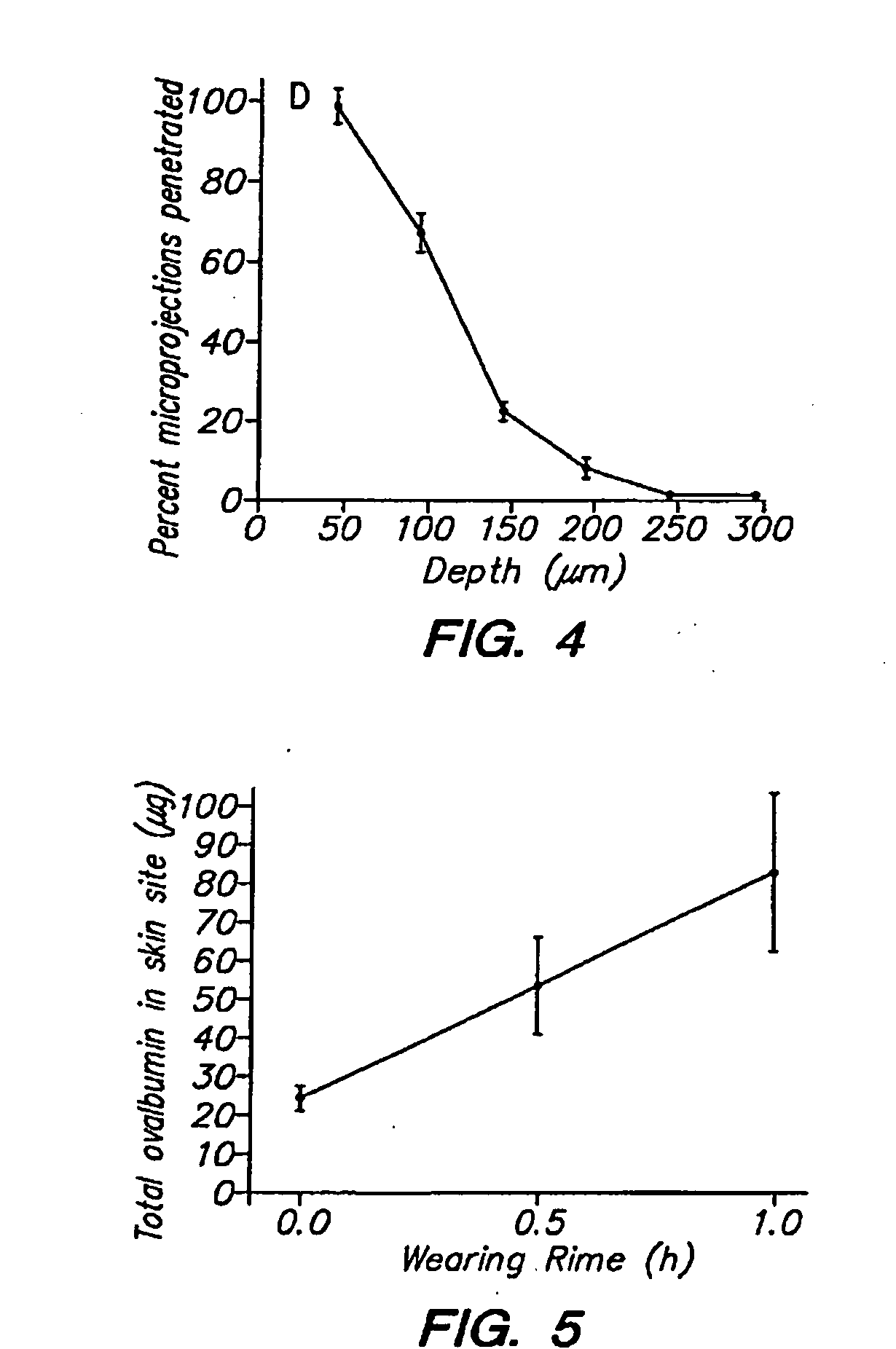Microprojection Array Immunization Patch and Method
a technology of immunization patch and microprojection array, which is applied in the direction of infusion needles, antibody medical ingredients, surgery, etc., can solve the problems of not being developed, minimally invasive methods, and affecting the type of immune respons
- Summary
- Abstract
- Description
- Claims
- Application Information
AI Technical Summary
Benefits of technology
Problems solved by technology
Method used
Image
Examples
example 1
[0041]The immunization studies had two objectives: to measure the immune response caused by delivery of varying amounts of OVA from microprojection arrays in hairless guinea pigs (HGPs), and to compare the results against immunization with the microprojection array using a low level of OVA together with the GMDP adjuvant. Outbred male and female euthymic HGP were obtained from Biological Research Labs (Switzerland, strain ibm:GOHI-hr) and Charles River Labs (Michigan, strain IAF:HA-HO-hr). Animals were 250 to 1000 grams. Animals were quarantined, individually housed, and maintained in a facility accredited by the Association for Assessment and Accreditation of Laboratory Animal Care. The research adhered to the Principles of Laboratory Animal Care (NIH publication #85-23, revised 1985).
[0042]The microprojection arrays used in these studies had 330 μm projections at a density of 190 microprojections / cm2 over a 1 or 2 cm2 area. The microprojection arrays were produced using controlled...
example 2
[0066]An aqueous solution containing 20 wt % ovalbumin was prepared. The ovalbumin was tagged with FITC for subsequent analysis. Microprojection arrays (microprojection length 250 μm, 595 microprojections per array) had an area of 2 cm2. The tips of the microprojections were coated with this solution by passing the arrays over a rotating drum carrying the OVA solution using the apparatus and method disclosed in co-pending U.S. patent application Ser. No. 10 / 099,604 filed Mar. 15, 2002. On some arrays, multiple coatings were performed. Fluorescence microscopy revealed that in all cases, the coating was limited to the first 100 μm of the microprojection tip. Quantitation by fluorimetry demonstrated that 1.8 μg, 3.7 μg, and 4.3 μg were coated on the arrays following 1, 2, and 4 coatings, respectively.
[0067]Some of these microprojection arrays were applied to hairless guinea pigs (three animals per group) for evaluation of ovalbumin delivery into the skin. The skin of the animal flank w...
PUM
| Property | Measurement | Unit |
|---|---|---|
| depth | aaaaa | aaaaa |
| area | aaaaa | aaaaa |
| molecular weight | aaaaa | aaaaa |
Abstract
Description
Claims
Application Information
 Login to View More
Login to View More - R&D
- Intellectual Property
- Life Sciences
- Materials
- Tech Scout
- Unparalleled Data Quality
- Higher Quality Content
- 60% Fewer Hallucinations
Browse by: Latest US Patents, China's latest patents, Technical Efficacy Thesaurus, Application Domain, Technology Topic, Popular Technical Reports.
© 2025 PatSnap. All rights reserved.Legal|Privacy policy|Modern Slavery Act Transparency Statement|Sitemap|About US| Contact US: help@patsnap.com



